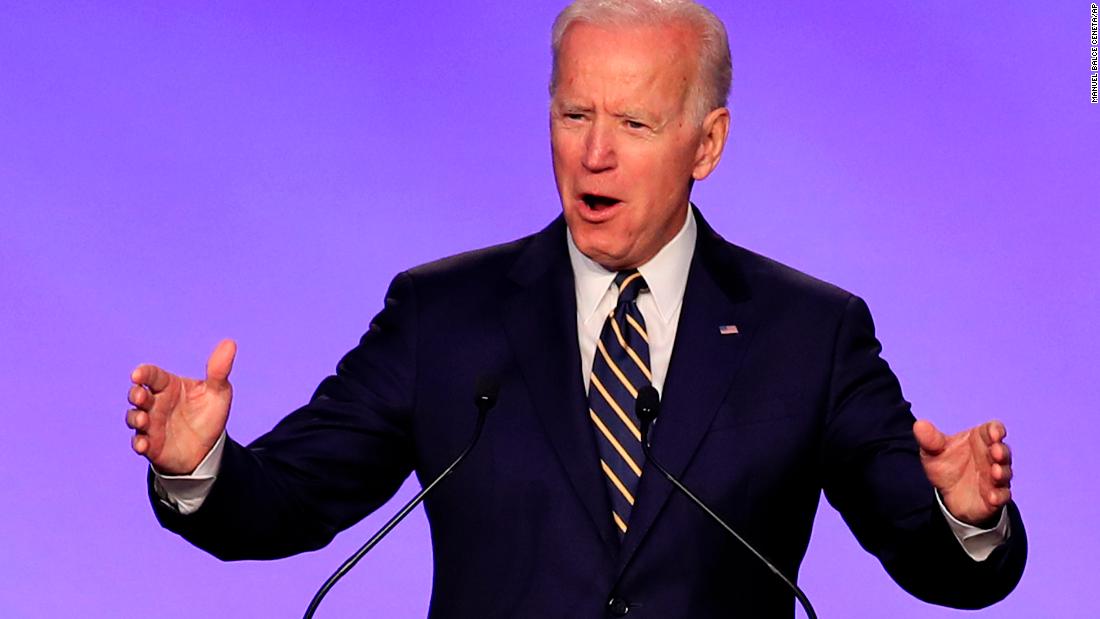
But, as HuffPost's Kevin Robillard wrote, the former vice president seems to be making a bet that there are still plenty of older, more moderate and less educated Democrats who can help him win the nomination.
That might not be a bad bet.
Democratic Party voters are older than younger
There's a case to be made that Democrats are younger than they were at the beginning of the decade. Those younger than the age of 40, for example, made up 6 more points of the Democratic vote in the 2018 midterm than they did in the 2010 midterm, according to a Catalist (a Democratic firm) estimate of the national voter file. The exit polls illustrate a similar trend.
But even if Democrats are younger than they once were, Millennials and Generation Z voters (roughly those younger than 40) are still very much the minority of Democrats. They made up just about 29% of all Democratic voters in the 2018 midterm, per Catalist. In fact even when you add in those 40 to 49 years old, you still only account for about 44% of Democratic voters in 2018. In other words, the AARP demographic (age 50 and older) were the majority (56%) of 2018 Democratic voters, per Catalist. And in case you were wondering, those ages 65 and older (27%) made up about double the percentage of Democrats who were younger than 30 (14%).
The exit polls can differ slightly on the exact level each age group makes up of the electorate, though they all sources agree that a majority of Democratic voters are age 45 and older.
That's a big deal when age was the No. 1 predictor of vote choice in the 2016 primary and continues to be a primary driver of vote choice in early 2020 polling.
A candidate who is receiving the bulk of their support from older voters -- like, for example, a Biden -- is in a considerably better position than a candidate who does best with younger voters. It's how Hillary Clinton won last time, despite Bernie Sanders swamping her among younger voters.
Democratic Party voters are more moderate than very liberal
Whether it be the exit polls, Gallup or the Pew Research Center, there's no doubt Democrats are more liberal than they once were. In the exit polls, for example, the percentage of Democratic voters who identify as liberal rose by double-digits between the Democratic midterm blowouts of 2006 and 2018.
Still, moderates and conservatives make up about 50% of all Democrats. In the 2018 midterms, the exit polls found that moderates and conservatives made up 54% of those who voted Democratic. Pew similarly put moderate and conservative Democrats as 54% of all self-identified Democrats and independents who lean Democratic voters in 2018. Gallup's 2018 figures had moderates as 47% of all adults who self-identified as Democrats.
And while liberals make up about 50% of Democrats, many of them are only "somewhat liberal." In a Quinnipiac University poll taken last month, people who identified as "very liberal" were only 19% of all Democrats and independents who leaned Democratic. Very liberals made up the same 19% of those who said they were voting Democratic in Suffolk University's final 2018 pre-election poll. The 2016 primary exit polls discovered that about 25% of Democratic primary voters called themselves very liberal.
Put another way: the moderate/conservative wing of the Democratic Party likely still makes up at least 2 times as much of the party's voters than the very liberal flank.
Again, this is probably good news for Biden, given that his support in the last Quinnipiac University poll among moderate and conservative Democrats (37%) was more than double his support from very liberal Democrats (14%).
It further suggests that Democrats who run far to the left may be misreading where the electorate is.
Democratic Party voters are more likely to be working class
Democratic voters are more likely to have a college education than they used to. Catalist, Pew and Gallup all show a trend toward Democrats being more educated than they used to be.
Despite this growing education, however, Democratic voters are still more likely to lack a college degree. According to Catalist, about 59% of voters who cast a ballot for the Democrats in 2018 didn't have a college degree. Gallup and Pew have the percentage of self-identified without a college degree well into the 60s. The exit polls, which historically have painted a better educated electorate than other sources, found about 55% of 2018 Democratic voters lacking a college degree.
Even among white Democrats, there are still many voters who have no college degree. Among whites, Catalist calculates the percentage of 2018 Democratic voters without a college degree at about 54%, compared to 46% who had a college degree. Gallup and Pew have the percentage of self-identified Democrats without a college degree in the high 50s among whites. The exit poll had them as a slight minority at 48% of voters who went for the Democrats in 2018.
As the Washington Post's David Byler put it, "Democrats should stop chasing Trump's base. They have their own white working-class voters."
When you broaden it out to look at all Democratic voters, all the sources I could find have whites with a college degree as less than a third of all Democrats. Most have them were at less than 30%.
Currently, there doesn't seem to be a large education divide in Democratic primary polling. A candidate who is able to tap into the large working class vote within the party, however, will have a big time advantage.
All together, a Democratic candidate of the old, moderate and working class stands a better shot of winning the primary than one of the young, left and college educated.
No comments:
Post a Comment